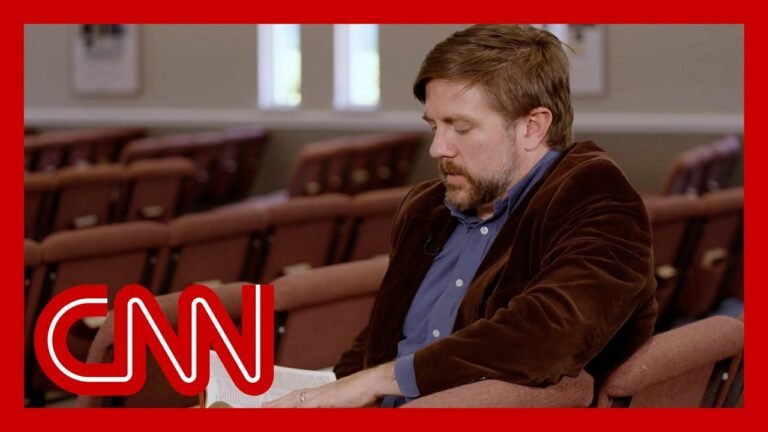The Role and Significance of the High Priest in the Bible
The role of the high priest in the Bible is a profound and multifaceted aspect of ancient Israelite religion, symbolizing both spiritual leadership and a unique connection to the divine. As the chief religious authority, the high priest was responsible for performing sacred rituals, offering sacrifices, and maintaining the sanctity of the Tabernacle and later the Temple. This pivotal figure not only guided the worship practices of the Israelites but also served as a mediator between God and the people, embodying the spiritual aspirations and covenantal promises of the Hebrew faith. Understanding the significance of the high priest sheds light on the broader themes of sacrifice, holiness, and redemption woven throughout biblical narratives.
What were the duties of the high priest?
The high priest in the Bible oversaw religious rituals, maintained the Tabernacle, offered sacrifices, and served as a mediator between God and the people.
What is the meaning of high priest in the Bible?
The concept of the High Priest in the Bible is central to the religious life of the Israelites, embodying the link between the divine and humanity. Serving as the foremost intercessor, the High Priest represented the people before God, ensuring that their offerings and sacrifices were presented in a manner that sought reconciliation and forgiveness for their sins. This role was not only a matter of ritual but also a profound responsibility that carried the weight of the community’s spiritual well-being.
In the context of the Israelite tradition, the High Priest’s duties included overseeing the sacrificial system, which was vital for maintaining a right relationship with God. Through these acts, the High Priest facilitated a deeper connection between the people and the divine, reinforcing the importance of faith and obedience within the community. This pivotal role highlights the significance of mediation in spiritual practices, illustrating how the High Priest served as a bridge to foster a sense of unity and devotion among the Israelites.
Who held the position of God’s high priest?
After His baptism by John, Jesus ascended to the heavenly Holy of Holies, assuming the role of the ultimate High Priest. His sacrificial death on the cross provided the perfect atonement for humanity’s sins, offering forgiveness to all who place their faith in Him. This pivotal act established a new covenant between God and humanity, transforming the relationship and paving the way for salvation.
Who is considered the most high priest in the Bible?
Melchizedek stands out as a unique figure in the Bible, introduced in Genesis 14:18 as a “Priest of the Most High God” (El Elyon). This title highlights not only his priestly role but also his significance in the spiritual hierarchy of the time. His mention in Genesis 14:19–20 and again in Genesis 14:22 reinforces the importance of this title, establishing a connection between the divine and the earthly realm through his priesthood.
Furthermore, the term “Most High” is woven throughout the Psalms, appearing over twenty times to refer to the God of Israel. This repeated emphasis underscores the sovereignty and supremacy of God, affirming the reverence associated with the title. Melchizedek’s role as a high priest serves as a precursor to the later priesthoods in biblical history, linking the divine authority of God with the spiritual leadership on earth.
Unveiling Sacred Leadership in Scripture
Sacred leadership, as illuminated in Scripture, emphasizes the profound connection between faith and guiding others. It highlights the importance of humility, service, and moral integrity, as exemplified by figures such as Moses and Jesus. These leaders demonstrated that true authority stems from a deep commitment to the well-being of their communities and a willingness to listen and respond to the needs of others. Their lives serve as a testament to the transformative power of leadership rooted in divine principles.
In exploring these biblical narratives, we uncover a model of leadership that transcends conventional power dynamics. Sacred leadership calls for a compassionate approach, where leaders prioritize empathy and wisdom over mere ambition. By embodying these values, they inspire those around them to cultivate a shared vision grounded in love and justice. This timeless message encourages contemporary leaders to reflect on their own practices, fostering environments where faith and action converge for the greater good.
The High Priest: A Bridge Between God and Humanity
The High Priest serves as a vital link between the divine and the earthly realm, embodying the role of mediator in spiritual practices. Through sacred rituals and prayers, this figure communicates the needs and aspirations of the people to God, while also conveying divine wisdom and guidance back to the community. This dual responsibility not only elevates the High Priest’s status but also reinforces the belief that humanity can connect with the divine through established traditions and practices.
In ancient cultures, the High Priest was often regarded as a custodian of sacred knowledge, possessing insights that transcended ordinary understanding. This role required a deep commitment to spiritual disciplines, including fasting, meditation, and rigorous study of sacred texts. By embodying these values, the High Priest not only nurtured personal spirituality but also served as an example for others, inspiring them to pursue their own paths of faith and devotion.
As society evolves, the essence of the High Priest remains relevant, reminding us of the importance of bridging the gap between the human experience and higher spiritual truths. In today’s fast-paced world, where many feel disconnected from their spiritual roots, the archetype of the High Priest encourages individuals to seek deeper connections with themselves, their communities, and the divine. By fostering understanding and compassion, this timeless role continues to illuminate the path toward a more harmonious and spiritually enriched existence.
Exploring the Duties and Impact of the High Priest
The High Priest holds a pivotal role in the spiritual and communal life of the faith, acting as a bridge between the divine and the faithful. Responsible for conducting sacred rituals and ceremonies, the High Priest ensures that traditions are upheld and the community’s spiritual needs are met. This role requires not only deep religious knowledge but also a profound sense of responsibility, as the High Priest often serves as a moral compass for the congregation.
In addition to overseeing religious practices, the High Priest plays a primordial part in interpreting sacred texts and teachings. This interpretation helps to guide followers in their daily lives, providing clarity and wisdom in a complex world. By fostering a deep understanding of these teachings, the High Priest empowers individuals to connect more meaningfully with their faith and with one another, strengthening the bonds within the community.
Moreover, the High Priest often extends their influence beyond the walls of the temple, engaging in social issues and community service. By advocating for justice, compassion, and support for the marginalized, the High Priest exemplifies the values of their faith in action. This commitment not only enhances the community’s spiritual vitality but also inspires others to embody these principles, creating a ripple effect of positive change that resonates far beyond the religious sphere.
Ancient Authority: The High Priest’s Place in Faith
In the tapestry of ancient religions, the high priest emerged as a pivotal figure, serving not only as a spiritual leader but also as a vital link between the divine and the community. This sacred role was steeped in tradition, with responsibilities that included performing rituals, interpreting sacred texts, and guiding the moral compass of society. The high priest’s authority was often seen as divinely sanctioned, granting them the power to influence both spiritual and political matters, thus solidifying their position as a cornerstone of faith.
As custodians of sacred knowledge, high priests held the unique ability to navigate the complexities of religious doctrine and community needs. Their teachings shaped the spiritual landscape, offering guidance during times of crisis and celebration alike. This duality of purpose—acting as both a mediator and a moral guide—ensured that the high priest’s influence extended far beyond the temple walls, cementing their role as a revered figure whose legacy shaped the very foundations of ancient belief systems.
Spiritual Symbolism: The High Priest’s Enduring Legacy
The High Priest stands as a timeless emblem of spiritual authority and divine connection, embodying the intricate relationship between humanity and the sacred. This revered figure not only served as a mediator between the divine and the earthly realm but also symbolized the quest for enlightenment and inner wisdom. Through rituals, prayers, and teachings, the High Priest guided the faithful, fostering a deeper understanding of their spirituality and reinforcing the importance of community in the pursuit of higher truths.
Moreover, the legacy of the High Priest continues to resonate in contemporary spiritual practices, reminding us of the power of faith and the importance of personal growth. As a symbol of balance and harmony, the High Priest encourages individuals to seek their own paths to spiritual fulfillment while honoring the traditions that have shaped their beliefs. This enduring influence inspires us to cultivate a deeper connection with ourselves and the universe, emphasizing that the journey toward enlightenment is a collective endeavor that transcends time and culture.
The role of the high priest in the Bible is a profound testament to the importance of spiritual leadership and sacrificial service in the ancient Israelite community. Through their unique position, high priests not only facilitated the people’s connection to God but also embodied the moral and ethical standards expected of their society. Their legacy continues to influence religious thought and practice, reminding us of the enduring significance of faith, guidance, and the pursuit of holiness in our lives today.






